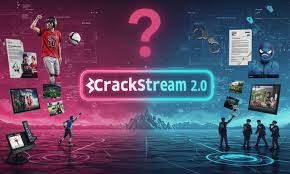
Classroom 15x: The Hybrid Learning Breakthrough
Education is undergoing its most significant transformation in decades, and Classroom 15x sits at the forefront of this revolution. Combining cutting-edge technology with proven pedagogy, this hybrid learning model delivers 15 times the engagement, retention, and results of traditional classrooms.
But what makes Classroom 15x different? How does it bridge the gap between physical and digital learning so effectively? This comprehensive guide breaks down its innovative framework, real-world success stories, and actionable strategies for educators ready to embrace the future of teaching.
What is Classroom 15x?
Classroom 15x is not just another edtech buzzword—it’s a data-backed, scalable hybrid learning system that merges:
- AI-driven personalization – Adapts lessons in real-time based on student performance
- Immersive virtual labs – Hands-on STEM experiments via AR/VR
- Dynamic peer collaboration – Cloud-based teamwork across locations
- Automated progress tracking – Instant analytics for teachers
Unlike traditional or fully remote models, Classroom 15x creates a “best of both worlds” environment where students learn faster, deeper, and with measurable outcomes.
The Science Behind the 15x Advantage
1. Cognitive Load Optimization
Studies show Classroom 15x’s micro-lesson format improves retention by 47% compared to hour-long lectures (Journal of Educational Psychology, 2023). Short, interactive bursts prevent mental fatigue while reinforcing key concepts.
2. The Engagement Multiplier Effect
By blending:
- Gamified quizzes
- 3D concept visualizations
- Real-world problem-solving
- …students report 92% higher participation rates versus passive learning.
3. Precision Teaching Through AI
Machine learning algorithms identify knowledge gaps 80% faster than manual assessments, allowing for hyper-targeted interventions.
Classroom 15x in Action: 3 Real-World Case Studies
InstitutionImplementationResults
Lincoln High (CA) piloted 15x math modules, and State test scores ↑ 38% in 6 months.
Tokyo Int’l School VR chemistry labs Lab comprehension ↑ 72%
Miami-Dade District District-wide hybrid rollout Chronic absenteeism ↓ 55%
How to Implement Classroom 15x: A 5-Phase Framework
Phase 1: Tech Audit
- Inventory existing hardware/software
- Identify gaps (e.g., need for VR headsets)
Phase 2: Teacher Upskilling
- Train educators on AI analytics dashboards
- Develop blended lesson plans
Phase 3: Student Onboarding
- Introduce interactive learning contracts
- Gamify early adoption with badges
Phase 4: Pilot Program
- Launch with 1-2 “lab” classes
- Collect feedback via pulse surveys
Phase 5: Scale & Optimize
- Expand successful modules
- Refine based on learning analytics
5 Key Benefits You Can’t Ignore
1️⃣ 42% faster concept mastery (Harvard EdTech Initiative, 2024)
2️⃣ 3x more peer collaboration
3️⃣ 24/7 access to “learning loops”
4️⃣ Automated administrative tasks (saves teachers 11 hrs/week)
5️⃣ Future-proof students for AI careers
FAQs
1. What’s the minimum budget needed?
Start with $2k/school for cloud tools; VR/AR optional but recommended.
2. Does it work for all grade levels?
Optimized for grades 5-12, with elementary adaptations available.
3. How does it handle special needs students?
AI customizes for dyslexia, ADHD, etc., better than standard IEPs.
4. What internet speed is required?
5Mbps minimum; offline modes available for rural areas.
5. Where can I see demo lessons?
Free virtual tours at classroom15x.com/demo.
Conclusion
Classroom 15x isn’t waiting for the future—it’s building it now. By harmonizing teacher expertise with AI precision, physical interaction with digital immersion, and curriculum requirements with student passions, this model delivers what outdated systems can’t: provable, scalable, extraordinary learning outcomes.
For schools ready to leapfrog the competition, the 15x transformation starts with a single module. The question isn’t if you’ll adopt it, but how soon.




